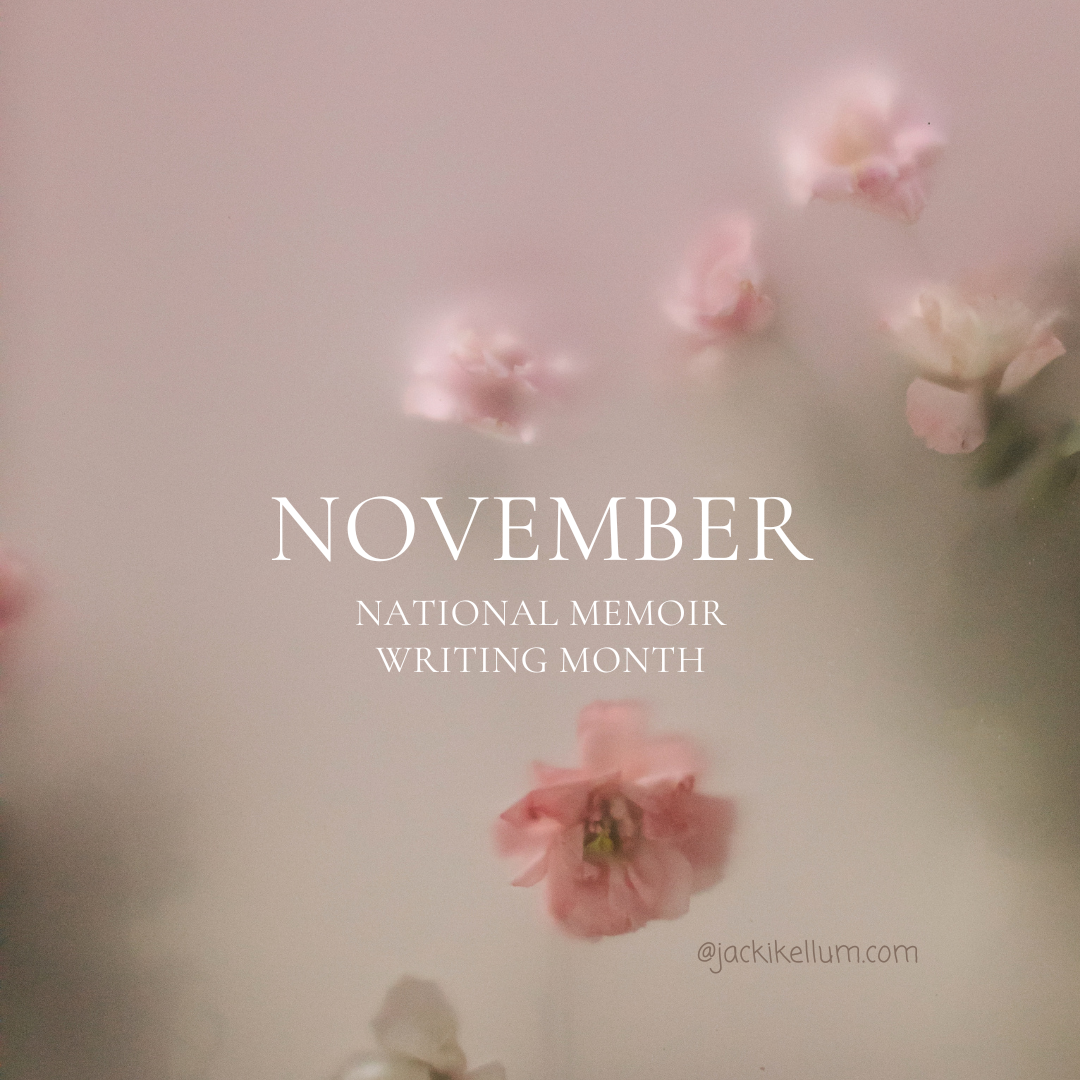
I write memoir for several reasons — least of which is to create a book of memoir.
- I write memoir to prime my writing pump.
- I write memoir to allow my writer’s voice to rise to the surface.
- I write memoir to connect with the author within myself.
A few years ago, I coined the phrase “Harvest Your Past,” and that is precisely what happens when I write memoir:
I harvest my past to find stories, and I employ those stories to improve my powers of observation and to improve my efforts to write more descriptively and more authentically.
In other words, Writing Memoir is a springboard from which all of my other writing stems.
I am primarily a picture book writer, but most of my picture books stem from my own life, and I am certain that writing memoir is a way that I improve my writing for my picture books.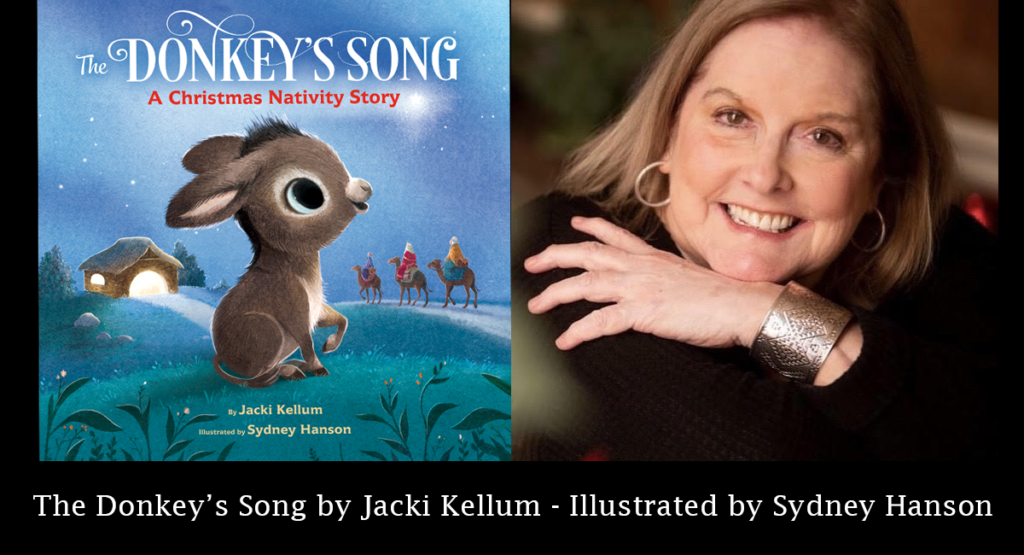
My picture book The Donkey’s Song is a celebration of my memories.
No, I wasn’t in Bethlehem over 2,000 years ago. That is not my memory. My memories involve the thousands of times that I performed in my little church’s Nativity Story.
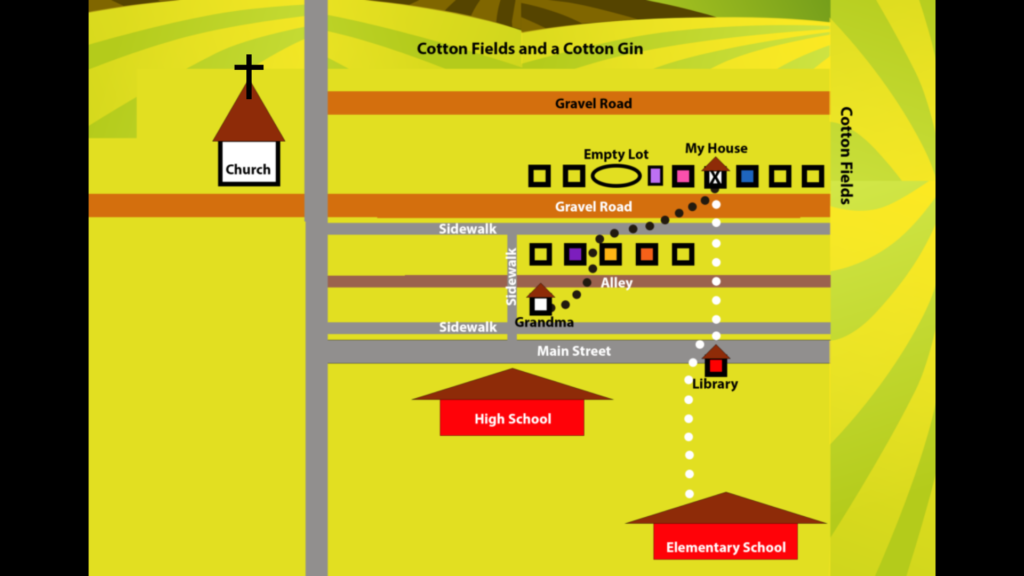
If you study the above map closely, you can see that my childhood home was within walking distance of all the foundation blocks of my entire life. Cotton fields surrounded my neighborhood. My grandparents lived on the block in front of my house. My schools were across the street from my grandparents, and my church was down the street from my house, in the other direction.
During the summer, I walked to my church each morning for two weeks, to attend Vacation Bible School. My memories of Bible School are mixed with the fragrance of the roses that were blooming along that path, the smell of freshly mown grass, and the morning dew that soaked my tennis shoes, as I walked.

Each winter, however, my church became a tiny Bethlehem, where the town’s children, donned with bathrobes, towels, and white sheets became the shepherds and the angels that greeted the Baby Jesus. Allow me to preface what I am saying with the fact that during the 1950s, people in my hometown didn’t travel very much. For years, I barely left the place where I grew up, and yet, I had a vivid imagination.
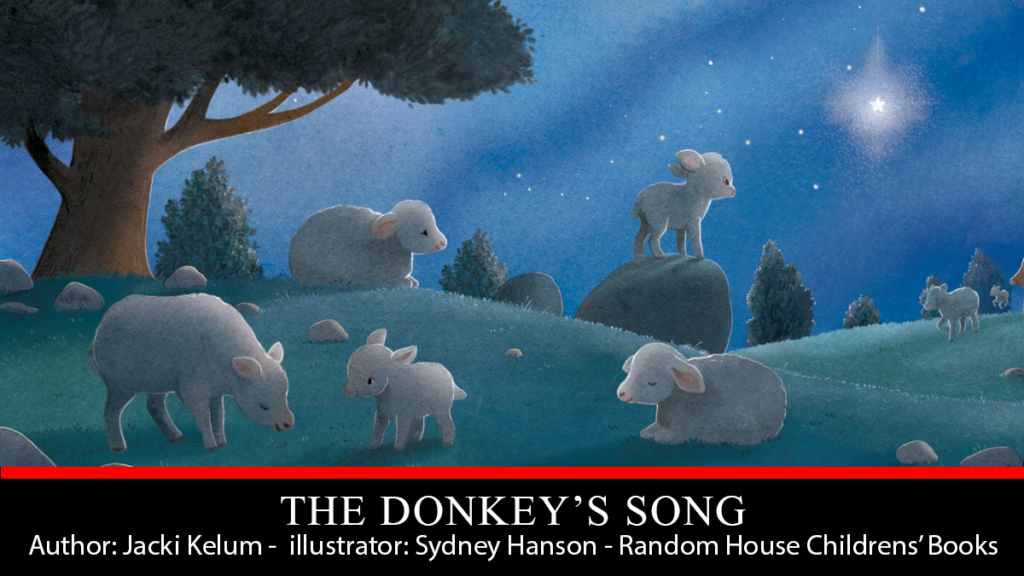
Think, if you will, how very thrilled I was by a story about a dark night in which a giant, miraculous star hung in the sky. In my child’s eye, that star was the most spectacular fireworks show possible, and because of that light, “Heaven and Nature” sang. My imagining about Jesus’s birth is the memory that prompted my book The Donkey’s Song.
I often tell people that I grew up in the middle of a cotton patch, and that is not far from the truth. I wasn’t wealthy. My dad was a barber. My mother worked at City Hall, and when I was a child, I picked cotton. I only got new toys at Christmas. Christmas became the most momentous time of my year, and my memories of Christmas are also laced with the wonder of a special night, a magical light, and a Baby that changed the world. When He was born, the greatest fireworks display ever burst into the sky.
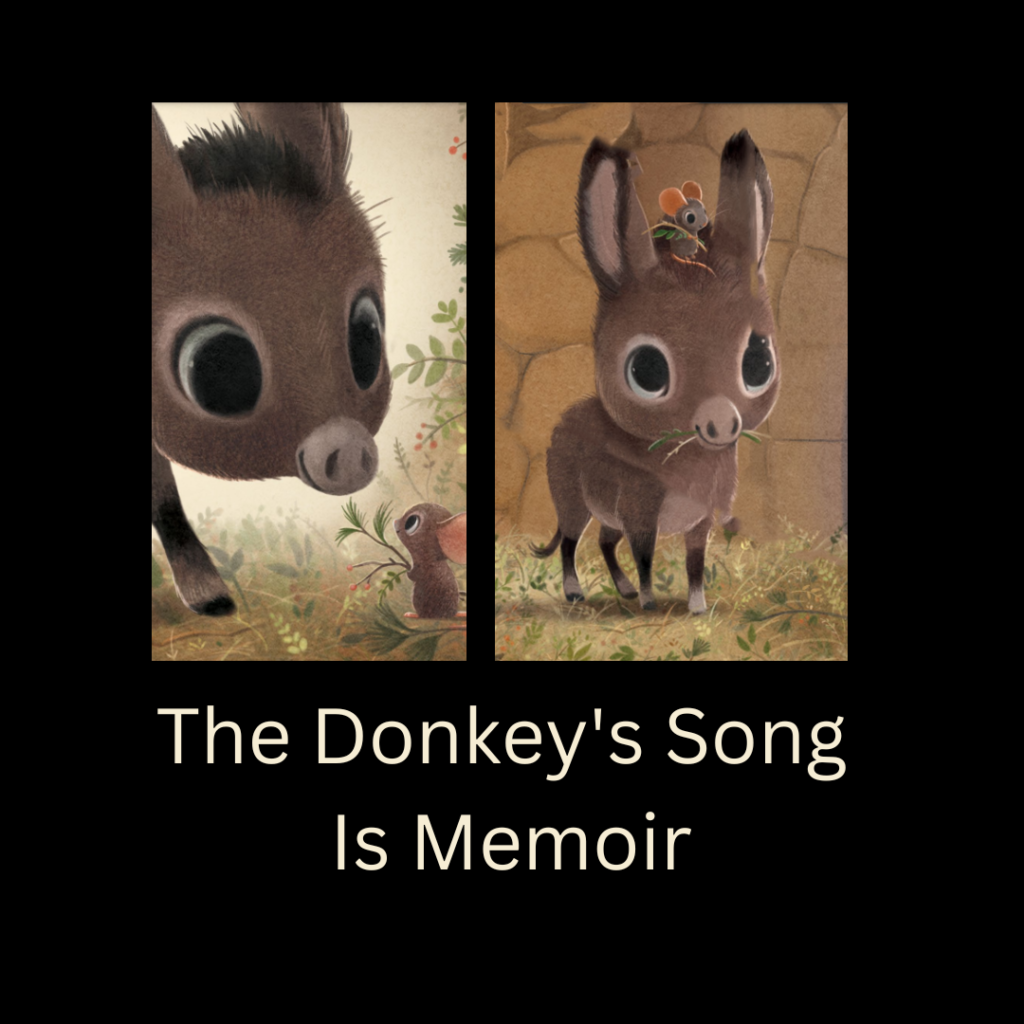
I AM THE DONKEY who sang at Christmas time!
The Donkey’s Song is MY story. I am the little, plain donkey who was bedazzled by the birth of a Baby King.
And for people who are writing their memoirs, here is the most salient point: I wrote The Donkey’s Song while I was writing about Christmas in my journal.
Many stories and books spring out of memoirs. Trust me about that. From Louisa May Alcott’s Little Women to Tobias Wolff’s This Boy’s Life, numerous works have sprung out of the memories that authors have recalled from their own lives.
Should Picture Book Writers Write Memoirs? Definitely.
Every writer should revisit and journal the memories from their own lives. After all, our own stories are the soil out of which every other story that we tell will grow. Harvest your memories. Harvest your past, and turn it into something fresh.
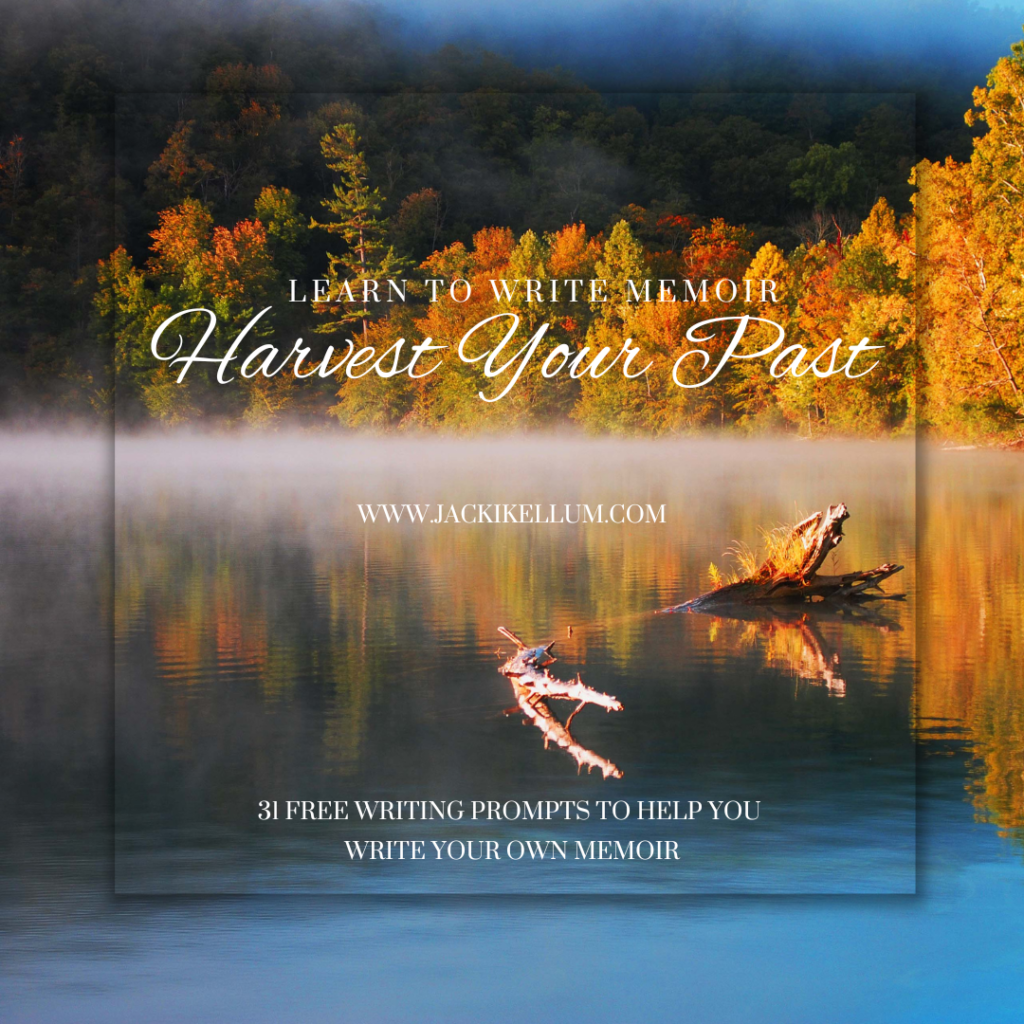
For the first day of the National Memoir Writing Challenge–Harvest Your Past–I want us to look at Cynthia Rylant’s writing. I believe that Rylant celebrates her own life in some of her picture books.

In The Relatives Came, The Relatives Made a Journey to the Appalachian Mountains while Cynthia Rylant Made a Journey Back Home and Into Herself.
I am also a painter, and many years ago, one of my painting instructors said to me: “Paint What You Know,” and I believe that is also good advice for writers. When I am observing and writing about what I know, my writing becomes more potent–it becomes more real.
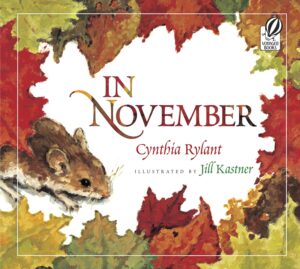
Today, I want us to look at Rylant’s book In November.
Notice how she paints a picture of the changing of seasons with her words:

“In November, the trees are standing all sticks and bones. Without their leaves, how lovely they are, spreading their arms like dancers. They know it is time to be still.” – Cynthia Rylant, In November
Rylant’s description of wintry trees is brilliant. It is terse. It is powerful, and it is a powerful use of figurative language. The trees are like dancers is a simile. The spreading arms of the trees is personification. When Rylant talks about the stillness of the trees, she alludes to the stillness of winter.
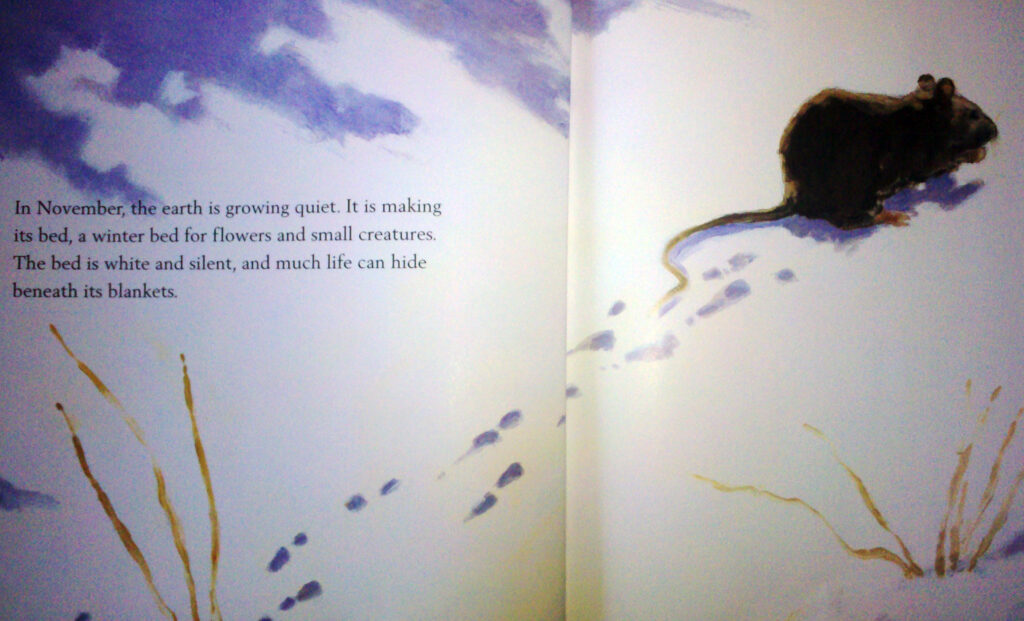
“In November, the earth is growing quiet. It is making its bed, a winter bed for flowers and small creatures. The bed is white and silent, and much life can hide beneath its blanket.” – Cynthia Rylant, In November
Again, Rylant describes the quietness and stillness of winter. In talking about the winter beds, she alludes to the time when nature lies fallow and rests.
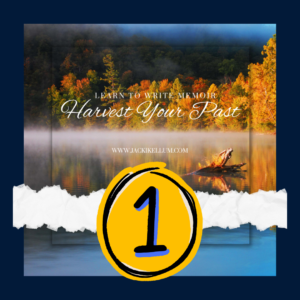
Your Exercise for Day 1 of Harvest Your Past Challenge is to begin a word list for all the ways that you describe November. Tomorrow, we’ll begin to refine our lists of words, and then, we’ll begin writing about our memories of November.
Discover more from Jacki Kellum
Subscribe to get the latest posts sent to your email.